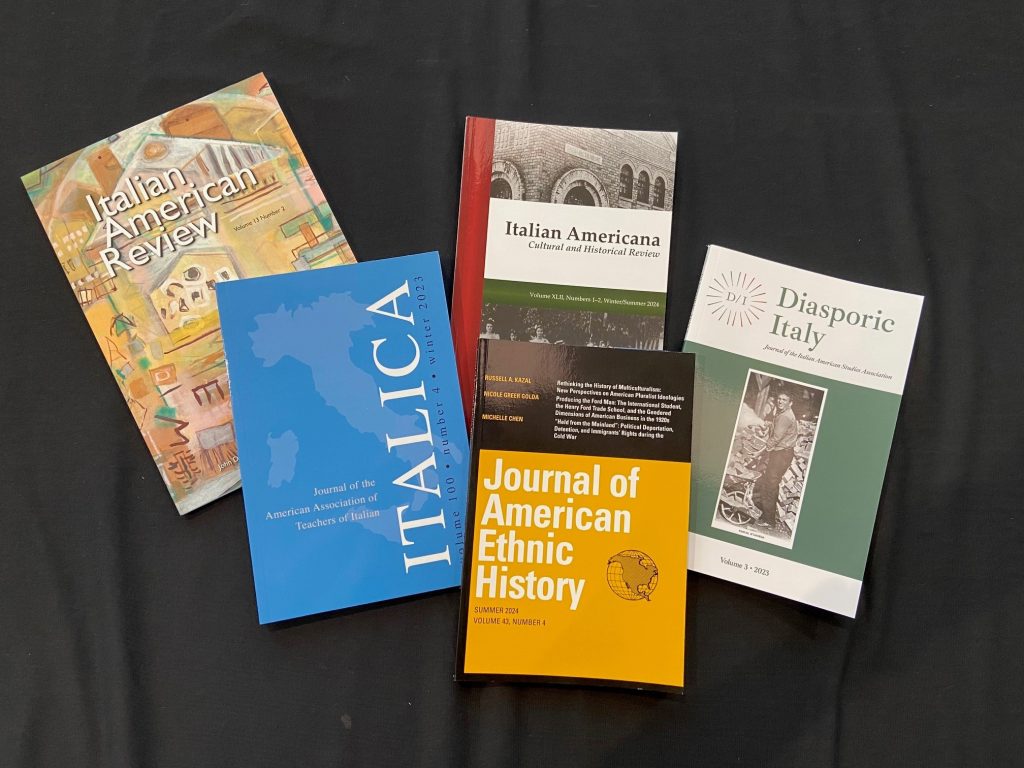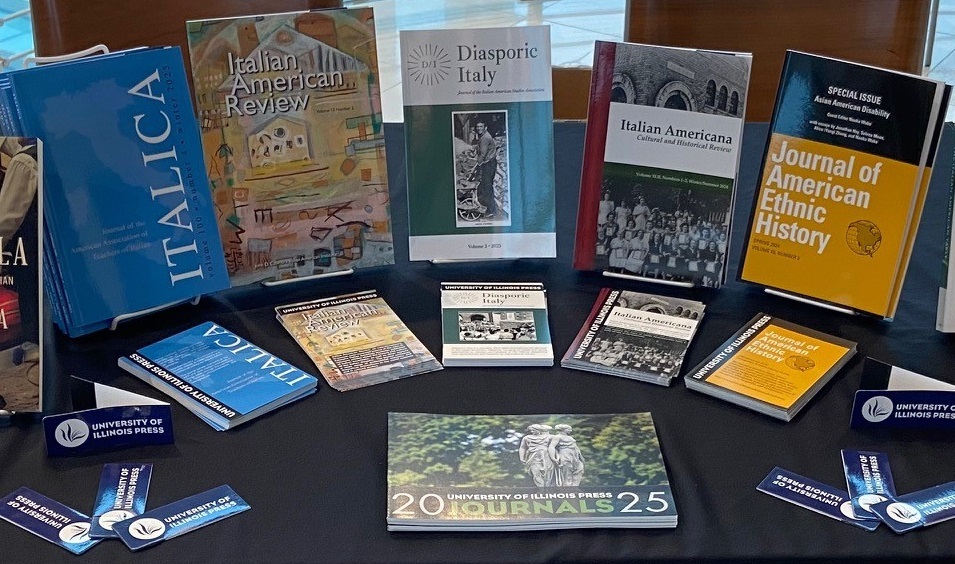It’s Italian American Heritage Month! Get to know our Italian and cultural studies journals to stay up to date on new research, book reviews, creative work, and more. Plus, check out a recommended article from each, free to access until December 31, 2025!
Are you headed to the Italian American Studies Association Annual Conference in November? We’ll see you there!
Diasporic Italy: Journal of the Italian American Studies Association is a scholarly, blind peer-reviewed journal devoted to the Italian American diaspora, focusing on timely and varied approaches to criticism and analysis of the field by presenting new perspectives and research on transnational issues. Interdisciplinary in nature, Diasporic Italy publishes on all aspects of the arts, humanities, social sciences, and cultural studies, and is particularly interested in comparative studies, pedagogy, and translation.
Recommended Reading: “Representation of Calabria in the Works of Juliet Grames’s Fiction: Interview with Juliet Grames, Fall 2024” by Alan J. Gravano
This exclusive interview with Juliet Grames, the acclaimed author of The Seven or Eight Deaths of Stella Fortuna and The Lost Boy of Santa Chionia, explores the compelling themes, characters, and inspirations behind her novels. Grames has become a distinctive voice in contemporary literature, weaving rich historical narratives that are deeply personal yet universal in scope. Her novels examine the lives of Italian and Italian American families, dealing with generational trauma, cultural identity, and the complexities of immigrant experience.
The Italian American Review, an interdisciplinary, bi-annual, peer-reviewed journal of the John D. Calandra Italian American Institute, publishes scholarly articles about the history and culture of Italian Americans, as well as other aspects of the Italian diaspora. The journal embraces a wide range of professional concerns and theoretical orientations in the social sciences and in cultural studies. It entertains articles about such topics as migration, politics, labor, race and ethnicity, urban studies, gender studies, literary criticism, as well as various forms of cultural production (religious feasts, cinema, music, etc.), especially those addressing societal aspects.
Recommended Reading: “‘I Tell Heem Nothing!’: Education and the Americanization of Italian Immigrants at the Beginning of the Twentieth Century” by Cristina Stanciu
This article will explore episodes of Americanization through education, print culture, and silent film in the first two decades of the twentieth century, focusing on the experiences of immigrants from Italy and other southern and eastern European countries.
Italian Americana is a double-blind peer-reviewed journal dedicated to exploring the Italian emigrant/immigrant experience through both scholarly and creative works. Its mission is to publish scholarly and creative works that explore the topic of Italian Americanness from a wide variety of perspectives. Italian Americana maintains its long tradition of printing innovative articles by historians, social scientists, literary critics, and visual artists, among others, as well as presenting original works of fiction, poetry, and memoir.
Recommended Reading: “Pater Familias, Papà, Daddy. Changes in Fatherhood and Fathering Across Italian American Generations” by Rosemary Serra
This contribution aims to analyze how fatherhood and fathers’ parental involvement have changed over time in different generations of Italian Americans by looking at the patterns that emerge from the literature, starting from the period of the great migration to the United States and up to the present day.
Italica features original scholarly articles on all aspects of Italian language, literature, and culture as well as studies on language pedagogy. Interdisciplinary and comparative studies related to Italian literary and intellectual culture are also accepted. The journal serves members of the American Association of Teachers of Italian (AATI) and other readers interested in things Italian through the publication of reviews, announcements, and bibliographies.
Recommended Reading: “Introducing Immigration and Integration in the Italian Language Curriculum: An Approach Based on ACTFL Standards” by Daniele Biffanti and Daniela Pozzi Pavan
This article explores how to introduce intermediate to advanced Italian language learners to the topics of immigration and cultural integration in contemporary Italy, with activities based on the American Council on the Teaching of Foreign Languages standards.
Journal of American Ethnic History
The Journal of American Ethnic History addresses various aspects of North American immigration history and American ethnic history, including background of emigration, ethnic and racial groups, Native Americans, race and ethnic relations, immigration policies, and the processes of incorporation, integration, and acculturation. It is the official journal of the Immigration & Ethnic History Society.
Recommended Reading: “‘As bad as anybody else’: The Innocents, Political Violence, and the Creole-Italian Alliance in Reconstruction New Orleans” by Christopher Joseph Cook Coordinated, violent political attacks increased throughout the months leading up to the 1868 presidential election in New Orleans and the surrounding area. Among the various Democratic organizations involved in election campaigning and voter intimidation, the group that received the lion’s share of credit for political attacks was the Innocents. The Innocents were a multi-lingual organization, made up mostly of Sicilians and other immigrants from modern Italy, but the club was helmed by well-connected Creole gentlemen. This paper explores the alliance between the Innocents’ Creole officers and Italian membership.

Find Out More
- Want to subscribe or submit your own work?
- To recommend any (or all) of these titles to your library, fill out this Library Request Form.
- Listen to The UPside Podcast:
- Check out our other European Studies journals: Journal of Finnish Studies, Polish American Studies, and The Polish Review

